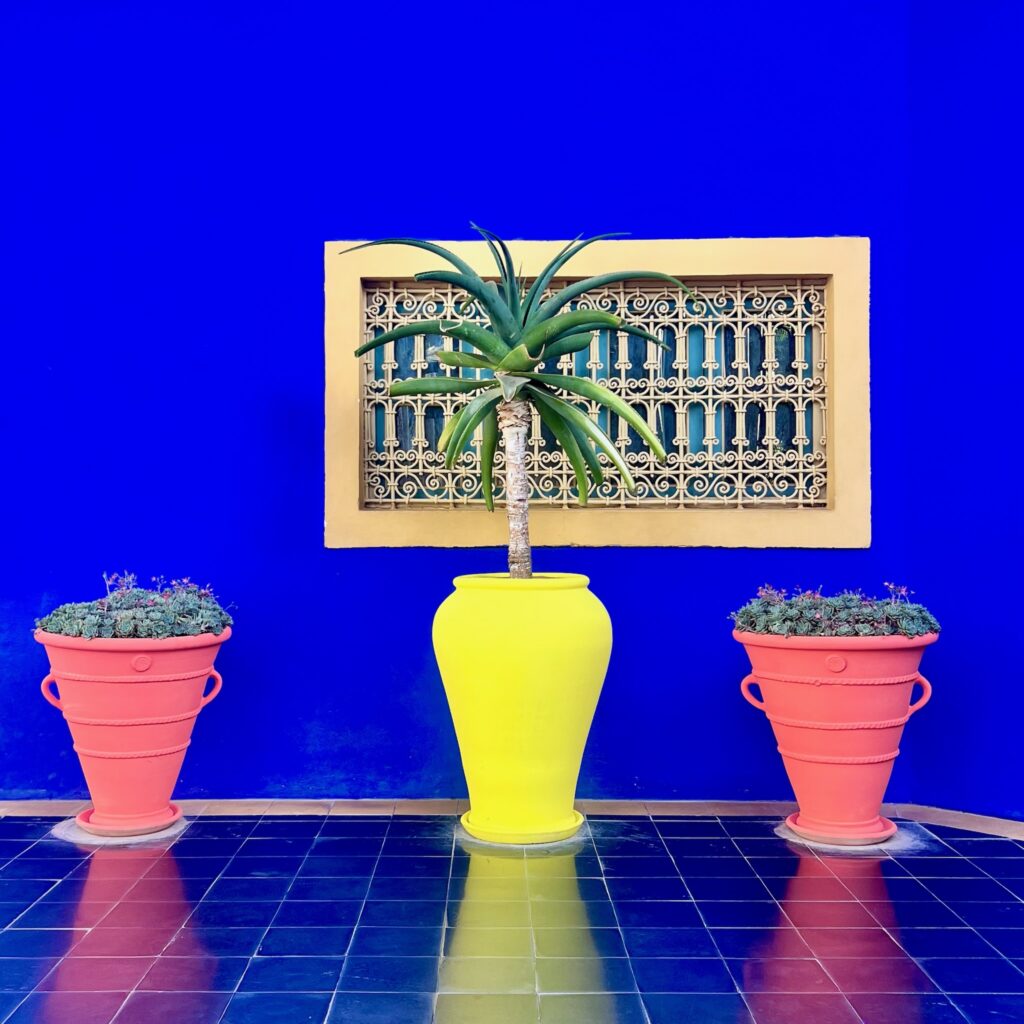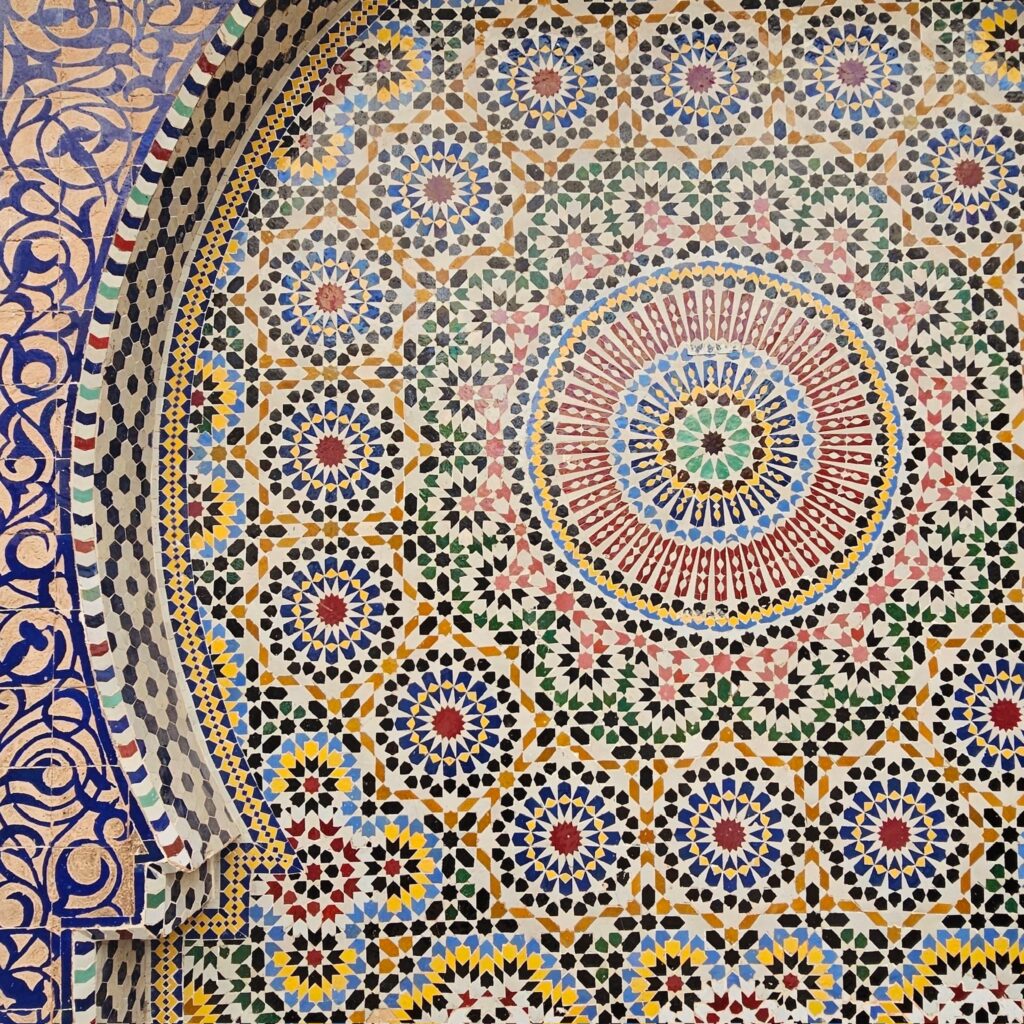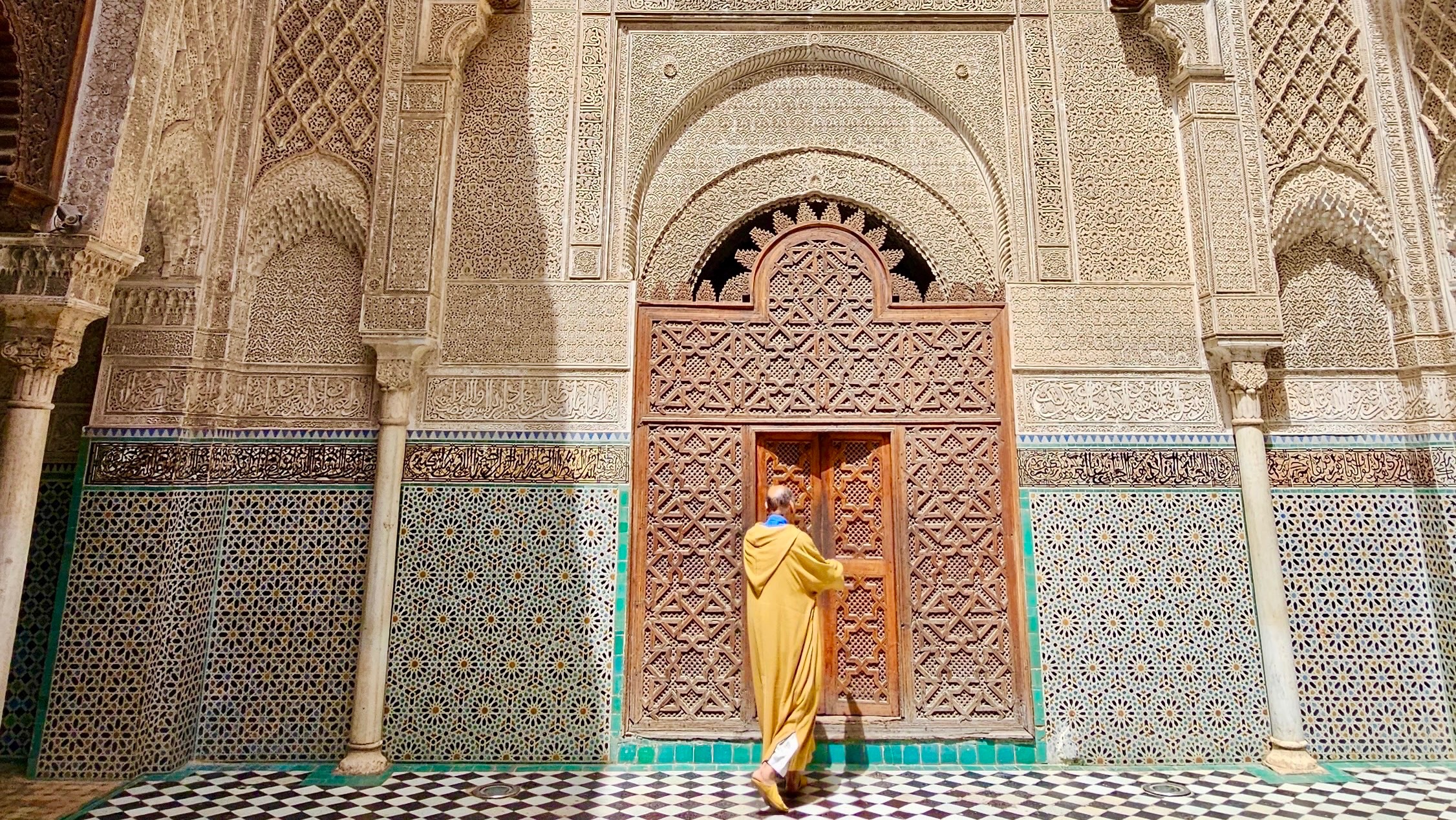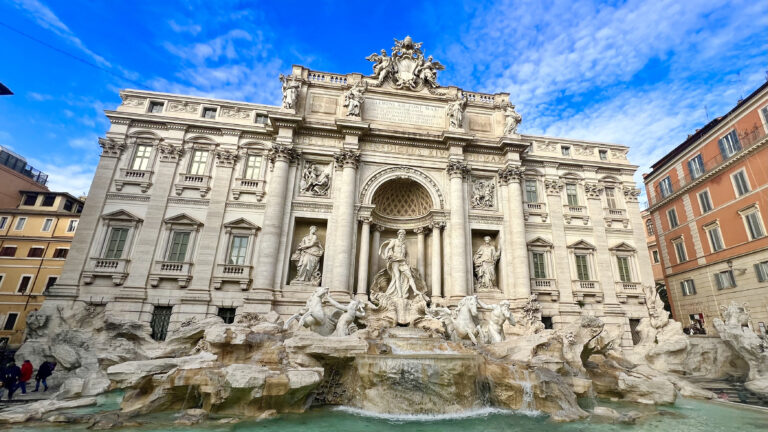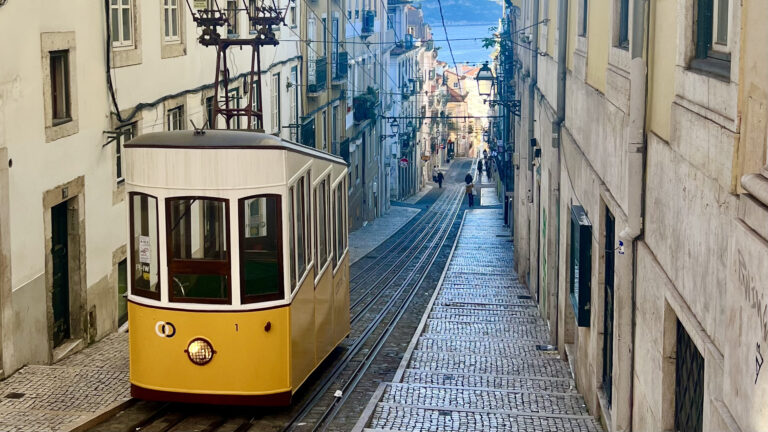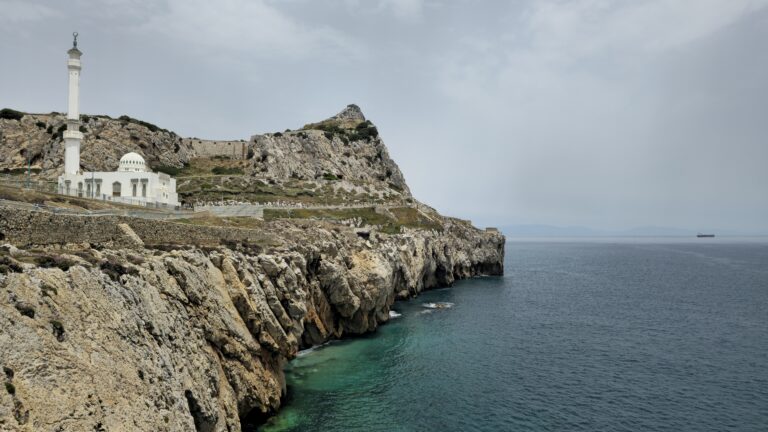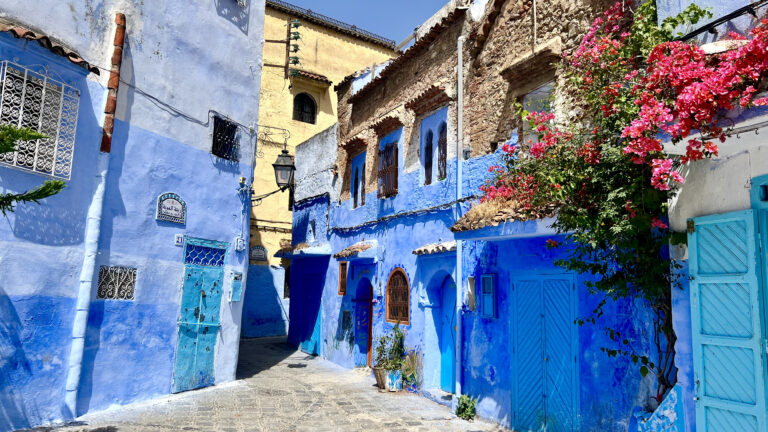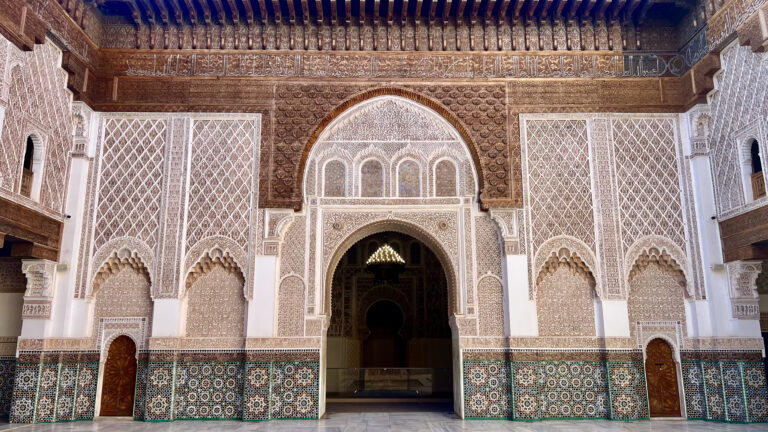The Only 10-Day Morocco Itinerary You’ll Ever Need
Morocco is a unique country full of amazing architecture, marketplaces and a way of life that feels very far away from neighbouring Europe. We spent a whole month travelling through Morocco, getting to know various areas of the country and it was an incredible adventure. Morocco is unlike any of the other countries we have visited together. We have used all the knowledge gained from our trip around this eclectic and exciting country to put together the ultimate 10-day Morocco itinerary. In this blog post, we will be sharing how we would structure a 10-day Morocco trip and the top things to do in each city we have included. We hope to inspire your Morocco journey and help you create the ultimate 10-day Morocco trip.
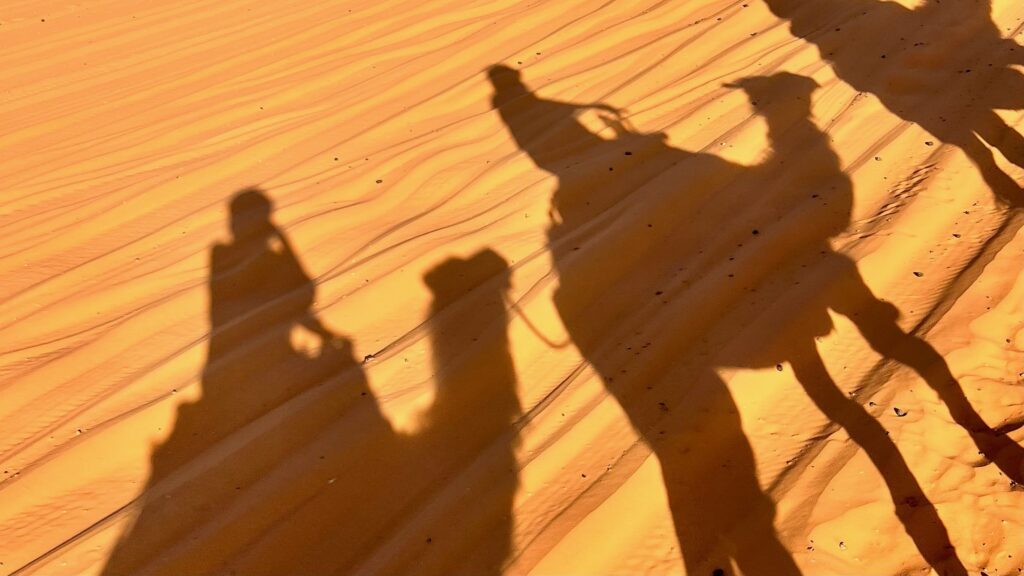
Moroccan Culture
Firstly, we believe that an important part of visiting a country is learning about the culture, in order to navigate social situations with respect and enhance your travel experience by understanding local customs and practices.
Morocco’s culture is a rich tapestry woven from Arab, Berber, and Andalusian threads. As a predominantly Muslim country (with the religion making up 99% of the population), Islamic principles shape its architecture, art, social customs, and laws. Along with its neighbours, Algeria and Tunisia, Morocco was colonised by the French but regained its independence in 1956. Today, it is the only monarchy in North Africa.
Beyond the urban centres, you’ll discover the enduring legacy of the Berber people, North Africa’s indigenous inhabitants. Their language, customs, and traditions are deeply ingrained in many regions, especially in the mountainous areas. Our visit to a Berber village was an incredible experience and a highlight of our time in Morocco. We loved observing their unique way of life firsthand and learning about their history.
The souks—bustling marketplaces brimming with colourful textiles, aromatic spices, and handcrafted goods—are a complete sensory overload. Amazing places to lose yourself in, these vibrant spaces showcase the creativity and skill of Moroccan artisans, preserving ancient traditions in a rapidly modernising world.
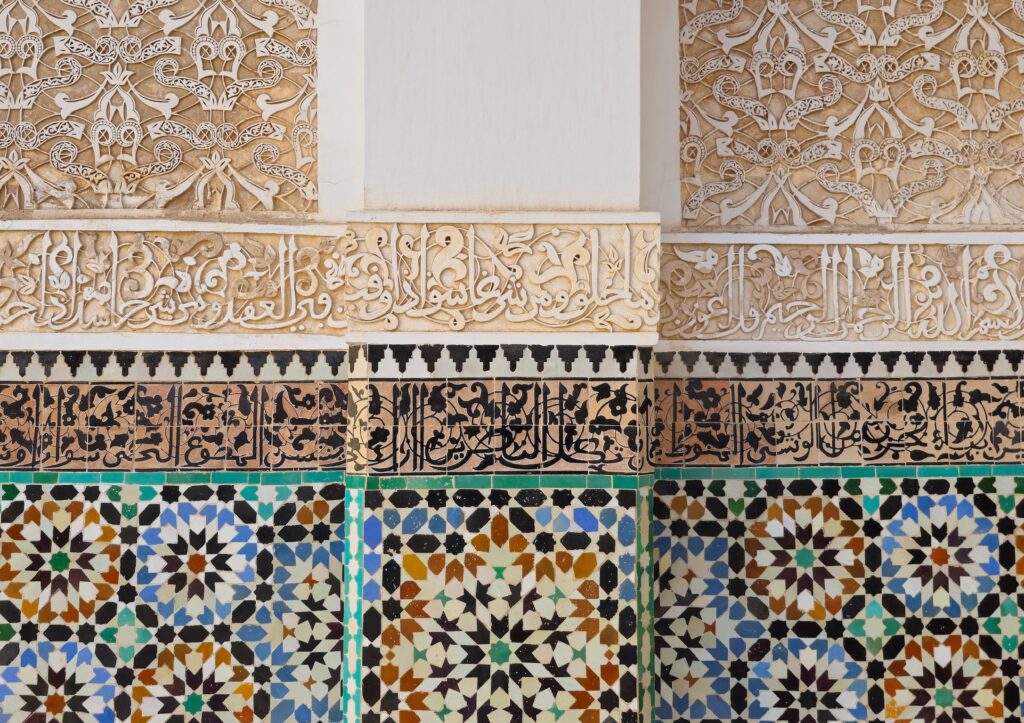
Our Top Tips for Visiting Morocco
- As Morocco is a Muslim country, be sure to dress modestly when visiting mosques and religious sites (long trousers for both men and women, covered shoulders for women).
- Payment will be expected in cash for pretty much everything. When withdrawing money in Morocco, be sure to use El Barid cash points as these do not charge a withdrawal fee. Note that there can often be long queues for these, so make sure to plan time for this.
- Haggling is expected in the souks, so be prepared to bargain for the best prices. We suggest initially countering to around 25% – 30% of the offered price, before working towards an agreement.
- Tipping is not obligatory, but it is appreciated (around 10%).
- Watch out for potential scams (for example, people telling you places are closed or giving you directions and then expecting payment).
- Learn a few basic phrases in Arabic before you go. This will help you communicate with locals and get around the city. Salam alaikum or simply salam for hello, and shukran meaning thank you.
- Contrary to most other countries, you will get the best deals for a SIM card at the airport when you arrive. The main companies are Orange, Maroc Telecom and INWI. We used Maroc Telecom and can vouch for their connection – we even had data coverage in the Sahara Desert! We recommend getting a SIM card as WiFi can be quite sketchy, even in hostels and hotels.
For further advice for your Morocco trip and the details of popular tourist scams to avoid then head to our Backpacking Morocco Insider Tips article here:
Getting Around
Getting around Morocco ended up being a lot easier than we had anticipated. The cities are well connected by bus and train options and there are a copious number of taxis in each area we visited (although be prepared to barter for these).
For airport transfers, book a service in advance (we used GetYourGuide) to avoid haggling with airport taxis after a long journey. Within the medinas, walking is the easiest way to get around.
For longer distances, flag down petit or grand taxis. Insist on using the meter or agree on a price beforehand. Petit taxis hold up to three passengers, while grand taxis take up to six and cost more. We recommend carrying small denominations of dirham to pay the small prices. Don’t be alarmed if taxis may pick up other passengers along the way—this is standard procedure here in Morocco.
For intercity buses, CTM is the most reliable, with modern buses and readily available tickets at stations or online. Trains are another scenic and stress-free option. The high-speed Al Boraq connects major Atlantic coast cities, while the Al Atlas network serves other destinations at a lower cost.
For a full detailed guide to transport systems in Morocco visit our Backpacking Morocco: Insider Tips blog post here.
10-Day Morocco Itinerary
Marrakech Days 1-4 (3 nights)
To begin your 10-day Morocco trip, we recommend starting by flying into Morocco’s most famous city, Marrakech. Marrakech Menara Airport receives direct flights from many major cities from all over Europe including London, Paris and Madrid. However, you may have to connect through one of these airports if you are coming from further afield. Marrakech was our first stop on our Morocco trip and we stayed just outside the centre of the Medina, close to the main square. We would recommend placing yourself inside the Medina when choosing your accommodation as it puts you in a perfect position to be able to explore most of the main attractions on foot, and there are many beautiful (and budget-friendly!) riads—traditional Moroccan houses with an interior courtyard or garden—and hotels within the medina walls.
The city of Marrakech was first founded in 1070 and is steeped in history. The chaotic atmosphere is palpable when you first get to the Marrakech medina, with sellers heckling you as you walk through the tight streets, beautiful colours of handmade artisan goods lining the streets and the sensational smells of the various food stalls wafting as you pass. Honestly, you could spend a whole week here taking in everything this city has to offer, but in 2/2.5 days you will be able to visit most of the main sights and get a great feel for this bustling city.
Day 1 Itinerary
We have dedicated day 1 of this Itinerary to arriving in Morocco. Depending on when your flight arrives and you get into the city you may have more time to spend exploring.
If you have time to start exploring, you can never spend too much time strolling through the medina, exploring all the exciting shops and stalls, and taking endless amounts of photographs of the energetic culture that surrounds you. Visit one of the many hammams that are quintessential to Moroccan culture. Marvel at the ruins of the Badi Palace and get a feel for the history and significance of the structure. For food, as well as all the wonderful treats you’ll find within the medina stalls, we had a fantastic meal at Cafe Restaurant Dar L’hssira, trying a variety of scrumptious local favourites. And it’s a bonus that it’s very kind to the budget too!
Day 2 Itinerary
On day one, we recommend starting with Bahia Palace (and to arrive for when it opens to beat the crowds). Bahia Palace is a 19th-century Arabesque building, that once belonged to the sultan and was used by the entire Moroccan royal family. After spending around 1-2 hours taking in the architecture, then head to Mazel Cafe in Tinsmiths Square for a refreshing Moroccan mint tea. Tinsmiths Square is next to the Jewish Quarter (Mellah district) so have a wander around here before heading to Henna Art Cafe for lunch.
Then for the afternoon, take a walk down to Koutoubia Mosque before getting lost in the huge Souk of Marrakech. You can shop for gifts, trinkets and souvenirs whilst watching the shopkeepers and artisans at work (be prepared to haggle over any and all purchases you choose to make!)
Finish up your first day in Jemaa el-Fnaa square. This square is a massive marketplace and the epitome of Morocco’s crazy energy. There are juice and food stalls dotted through the square, and many restaurants lining the edges. Pick one of these cafes or restaurants for the perfect place to sit at the end of the day and watch the sunset over the square, complete with a Moroccan sweet treat. Be mindful of certain scams in this square, the henna here is not traditional henna and contains chemicals that can damage your skin, and the snake charmers may try and lay a snake over your shoulders and ask for payment to remove it. For this reason, we recommend always being observant of your surroundings when walking through the square.
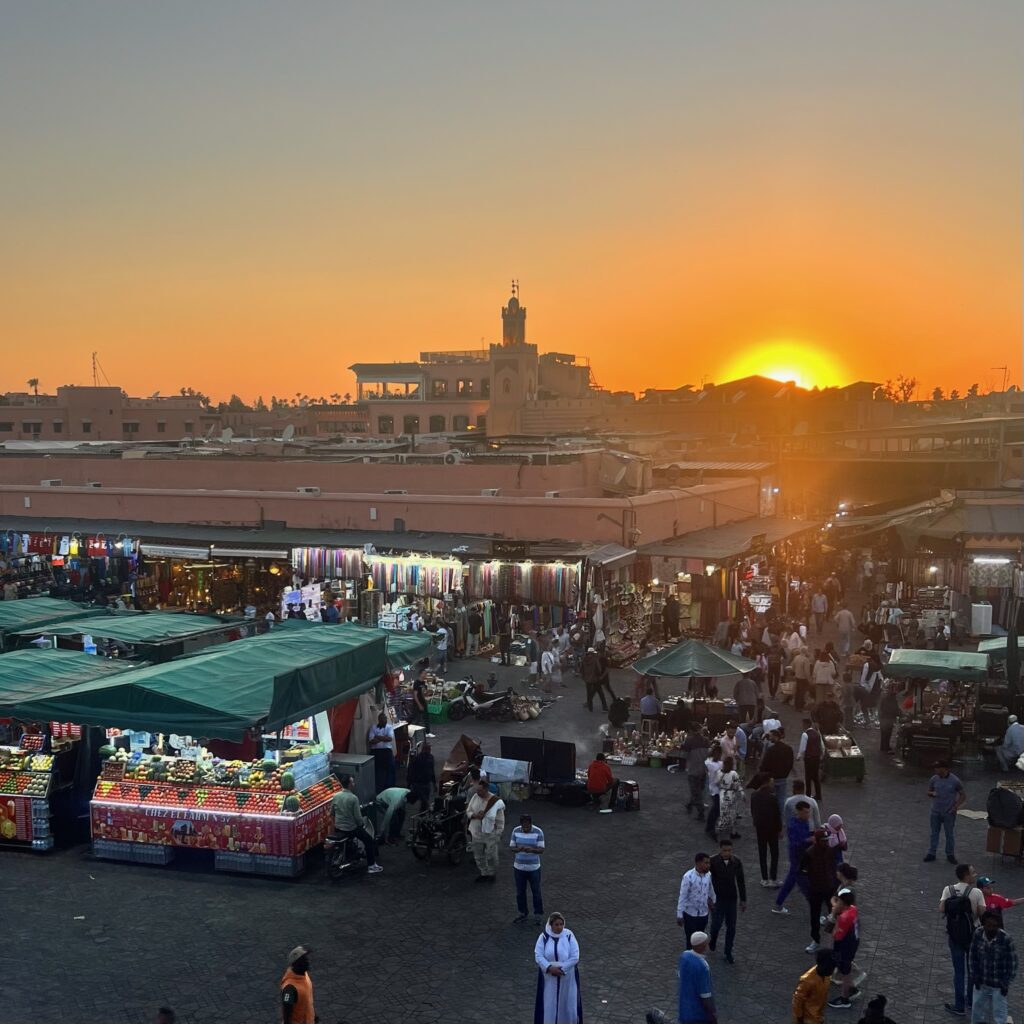
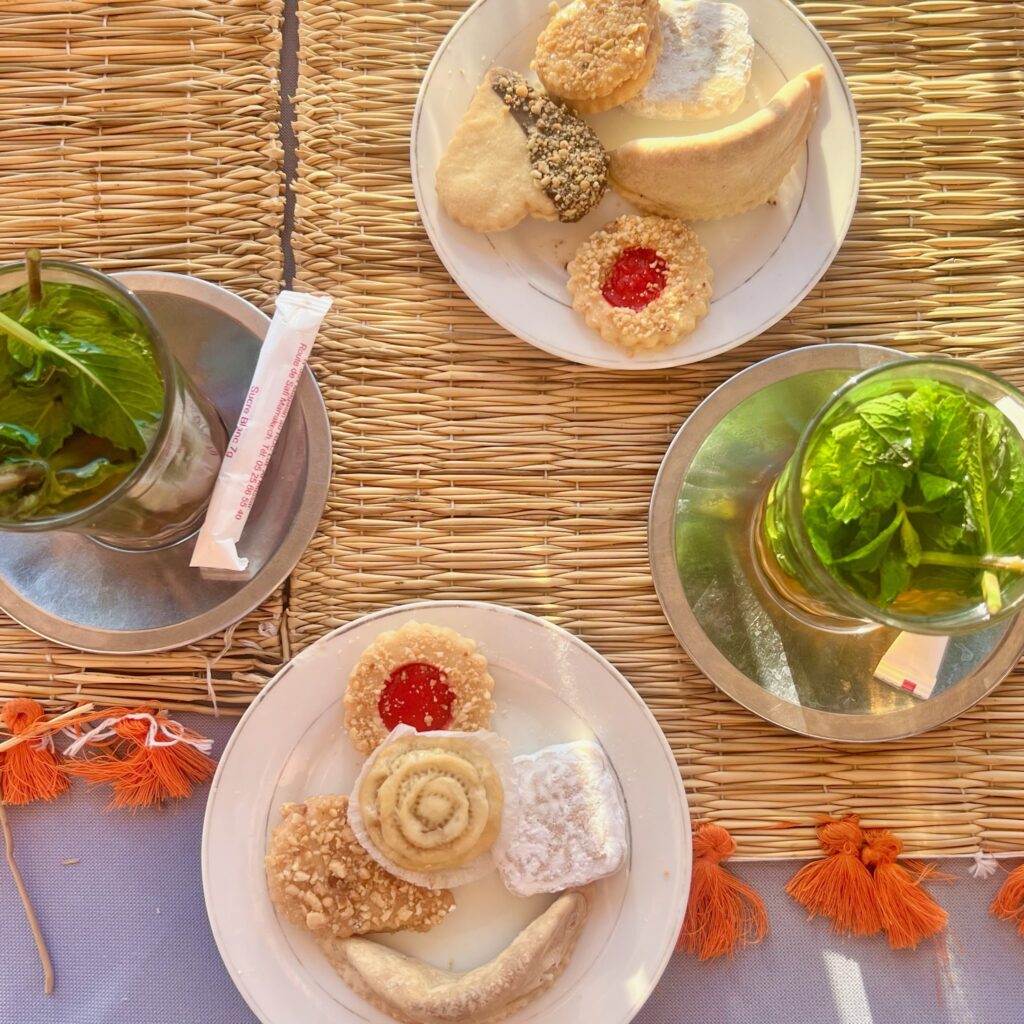
Day 3 Itinerary
To start day 2, head to Jardin Majorelle first thing (their first slot of the day is at 8:00 AM and we recommend booking in advance to ensure you can get in at this time). This is the only activity that we’ve included which is slightly outside of the city centre. Either hail a taxi or you can walk. The very pleasant walk will take you through the north of the medina, allowing you to see all the Moroccan locals starting their days, taking their morning coffees and setting up their market stalls. After the garden, we suggest heading back to the north of the city centre and taking a wander down to Le Jardin Secret, another very beautiful garden in Marrakech that has only been open to the public since 2016. It is a wonderful place to sit and sip a sweet mint tea, enjoying the calmness away from the hustle and bustle of the medina for a short while.
Then for lunch head to Chez Omar for a tasty and traditional budget-friendly meal in the heart of the medina. We found they catered for vegetarians here so if you are not a meat eater (like Eve) this is the perfect option for you! Next up for the day, the Maison De La Photographie de Marrakech is a Moroccan photography museum. The museum has 3 floors filled with photos documenting Moroccan history. And definitely don’t miss heading all the way up to the terrace at the top for views out over the city!
Next up, Ben Youssef Madrasa is an old Islamic college located not far from the Photography Museum. It is probably our favourite building we saw in Marrakech with intricate Islamic architecture and a tranquil and majestic courtyard, definitely a big highlight. For dinner, head over to Cafe Clock further south of the city and make the most of one of their evening events. They offer live music, storytelling and jam sessions, or just go to try their famous Camel Burger!
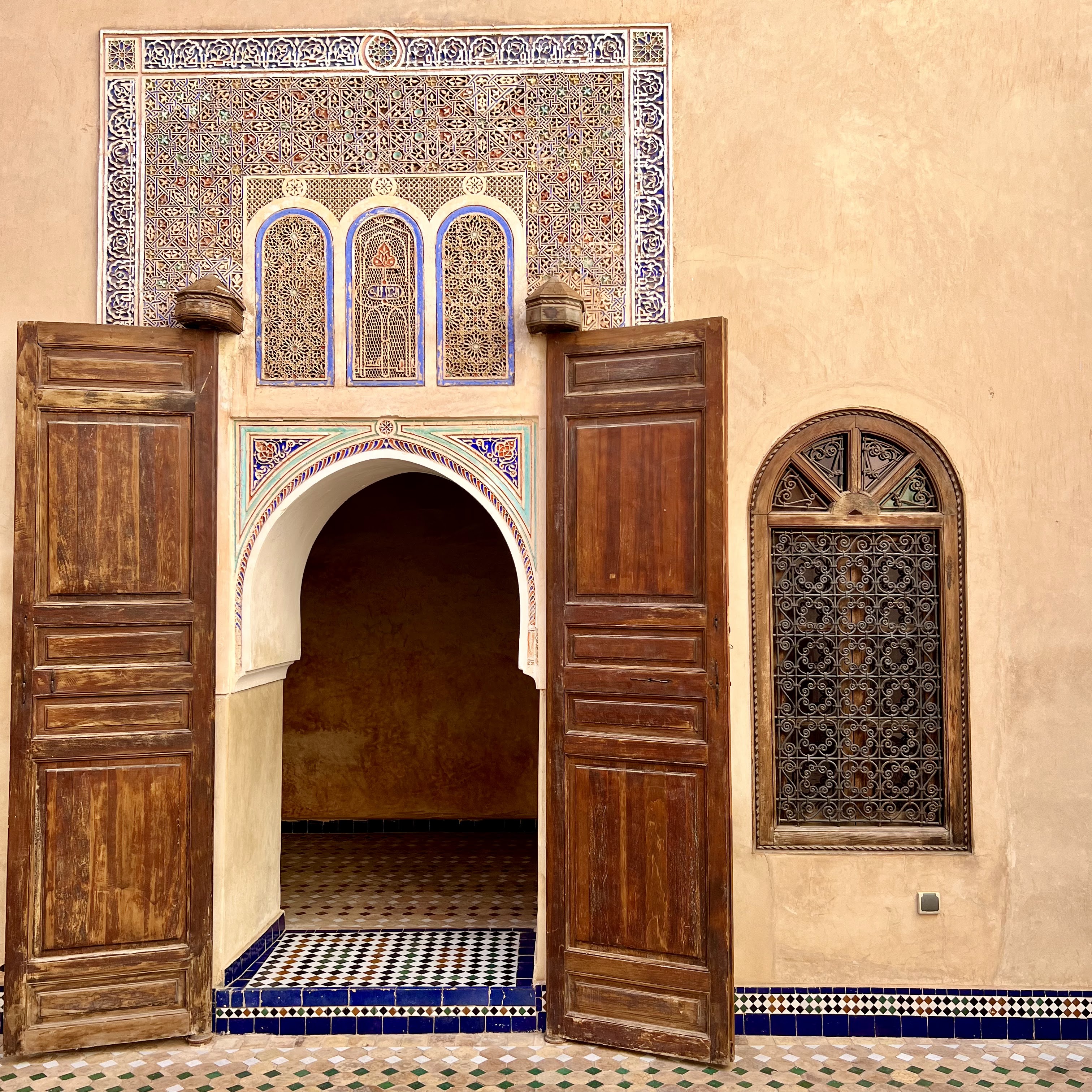
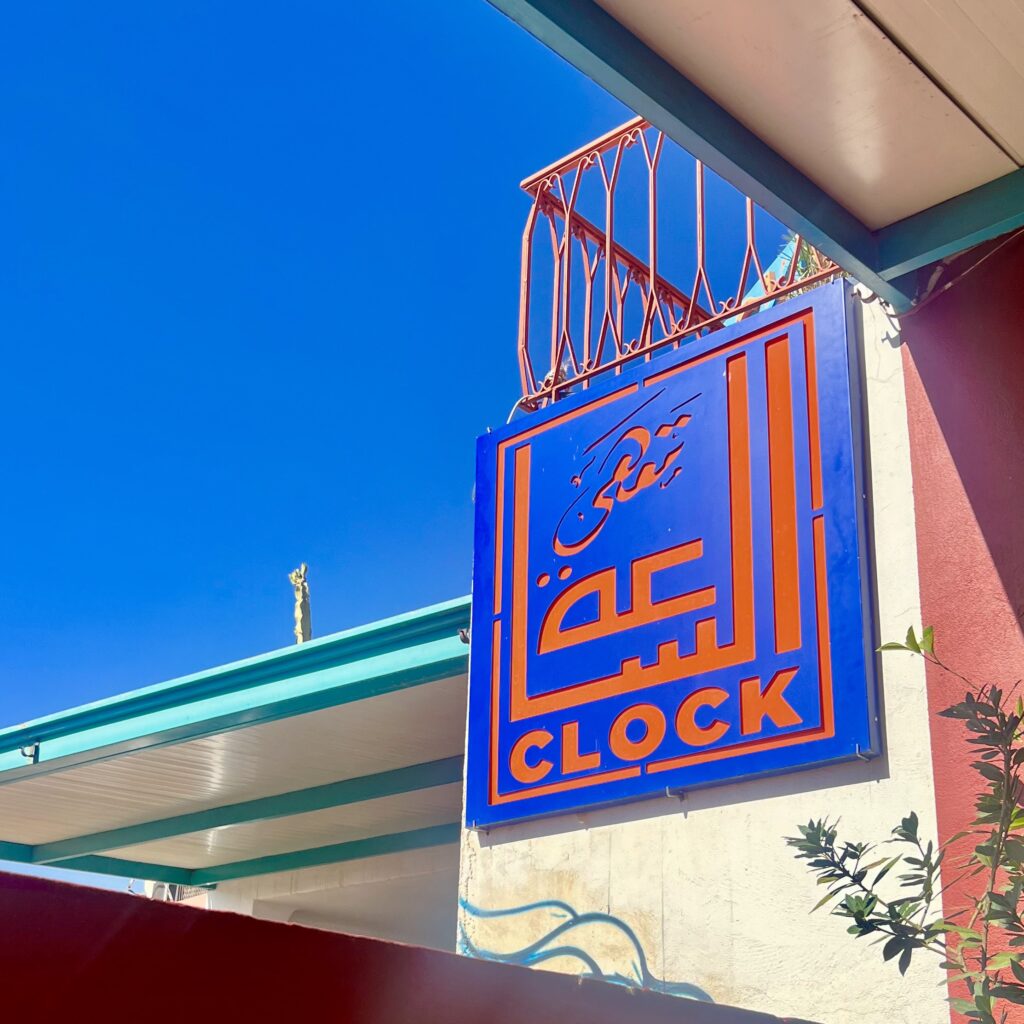
For our full 2-day in Marrakech Itinerary, more things to do and our accommodation recommendations for staying in the medina head here:
Marrakech to Fes Tour (Merzouga Desert Overnight Stay) Day 4-6 (2 nights)
Day 4 Itinerary
Many tour companies offer a Marrakech to Fes 3-day 2-night desert trip, and based on what we saw on our tour they all more or less visit the same spots. We recommend this tour if you are travelling on a budget and this tour if you are looking for a more luxurious option.
The first day consists of a drive up into the High Atlas Mountains (with a stop off at the Tizi n’Tichka viewpoint – this offers stunning views over the Atlas mountain range), a visit to Ait Benhaddou (a UNESCO World Heritage site made famous by many films, most notably Gladiator!) Then in the evening, you will reach the stunning city of Tinghir, where you’ll spend the night in a local hotel.
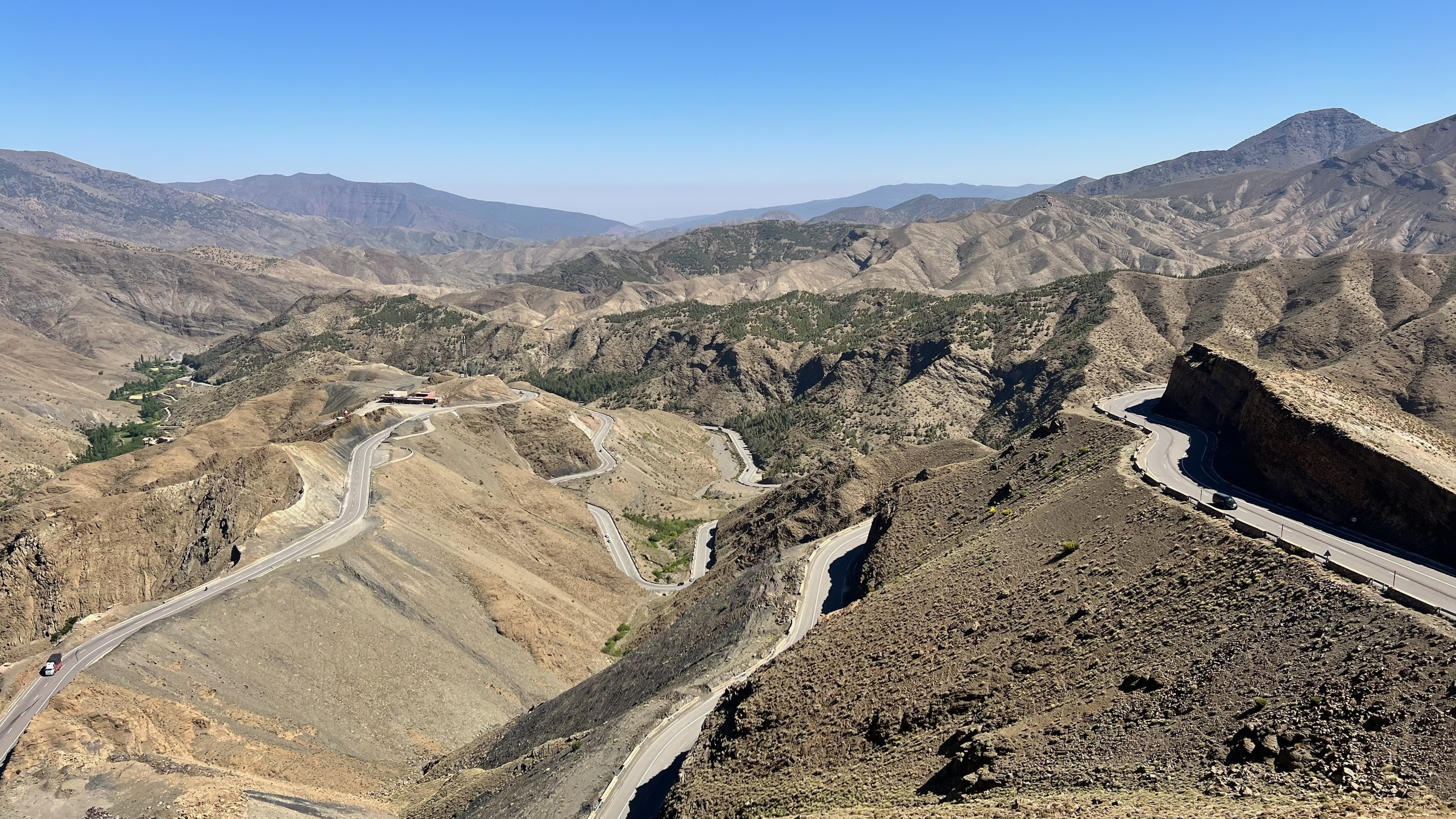
Day 5 Itinerary
The second day starts with a drive through the captivating Todra Gorge, with its towering cliffs and flowing river, before arriving at the edge of the desert in Merzouga. From here you will have the option to ride to the camp in true Saharan style on camel or you can join the tour guides in 4×4 jeeps.
Spending a night in the desert was a total bucket list moment for us. The atmosphere was unlike anything we’d felt before and we’ve never seen scenery like it. We were able to explore the desert and watch as the sun went down behind the dunes. If you’ve got the budget for it, they offer a sunrise ATV ride. We didn’t take part, but everyone that did raved about how amazing it was, so if that’s your thing maybe put some money aside for it!
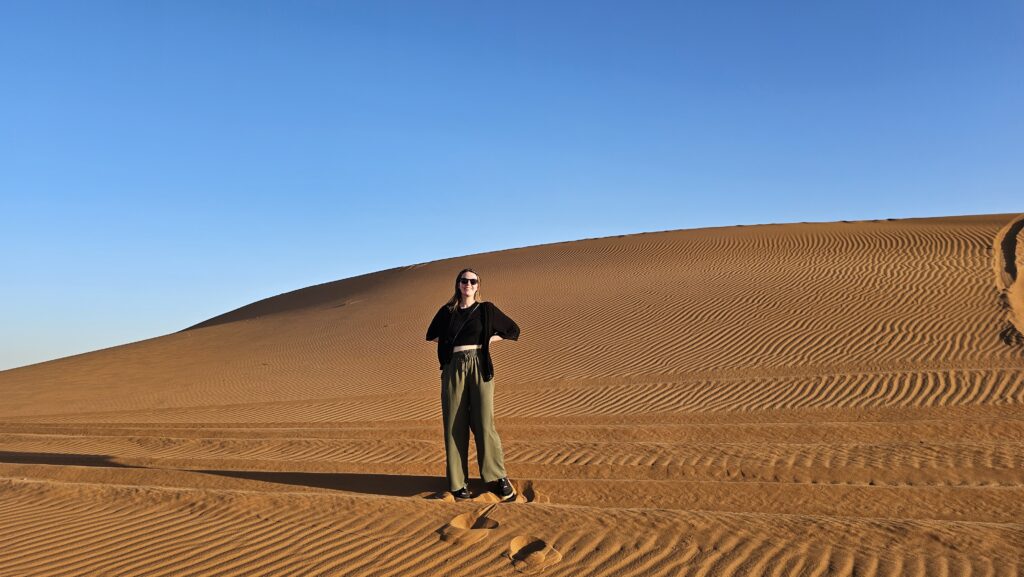
Day 6 Itinerary
On the final day, you will leave the desert and then be taken to Erfoud, a city famous for its unique fossils. You’ll also drive through cedar forests, where you might spot some cheeky Barbary macaque monkeys, before ending up in Fes that evening.
Disclaimer: We found this tour a convenient way to be able to see a lot of key attractions in the east of Morocco easily and be able to spend a night in the desert (which we wanted to make sure we were able to do). If we had more time we would have chosen to hire a car to explore further into the less travelled areas of the Moroccan countryside. If you are travelling to Morocco and have more time we would highly recommend considering this as an option to allow more flexibility.
Fes Day 6-8 (2 nights)
Fes was founded in 789AD and has served as Morocco’s capital city through the ages, although Rabat is now currently the capital. The Medina of Fes is listed as a World Heritage Site and is one of the world’s largest and oldest urban pedestrian zones. It contains the University of al-Qarawiyyin which was founded in 857AD and is the oldest continuously functioning institute of higher education in the world. We recommend finding a place to stay in the medina, somewhere fairly close to the old city walls so it is easy to find on your arrival. Fes is a fascinating city steeped in history. It is also a hectic and all-encompassing place, so we recommend staying vigilant and aware of where you are going. In Fes, Google Maps is not the best at showing the medina accurately, so using it for a general sense of direction is our best tip but not getting alarmed if a path isn’t quite where it says – and don’t believe anyone who tells you a road is closed!
Disclaimer: We don’t wish to put anyone off Fes as it is a genuinely incredible city to explore and we highly recommend it to everyone to visit. However, scams are prevalent in Moroccan culture (particularly towards tourists – primarily due to the heavy reliance of the economy on tourism). It is best to be aware of this when interacting with individuals who may be trying to intentionally mislead you (further disclaimer: most locals we met and spoke to were lovely and wanted to help – we just experienced a lot of misleading information in Fes so feel the need to make this point here!)
Day 6 Itinerary (evening)
After dropping off your bags at your accommodation we recommend heading to dinner at the Ruined Garden. The restaurant is in the ruins of a courtyard house with ain the ancient imperial city, we had a delicious traditional Moroccan tagine here and the setting was beautiful.
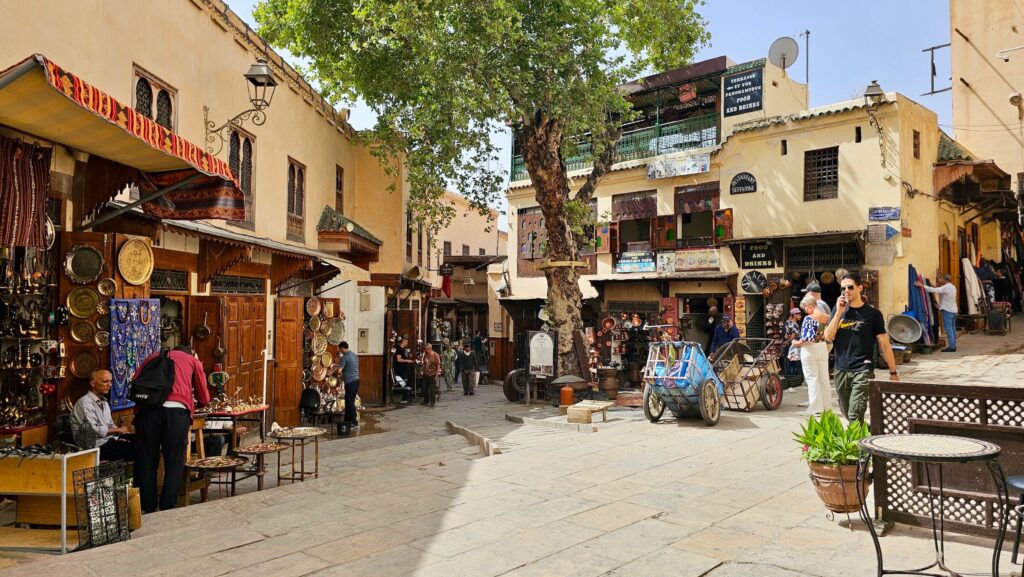
Day 7
Fes is particularly famous for its traditional leather tanning methods. There are various tanneries around the city which are very popular for tourists to visit, offering a glimpse into the leather dying process and providing excellent photo opportunities. The leather tanning involves soaking animal hides in large vats filled with a mixture of water, lime, salt, and cow urine to remove hair and flesh, followed by a second soak in a solution containing pigeon droppings to soften the leather, then submerging the hides in natural dyes like indigo, henna, and poppy flower before finally drying them in the sun; this traditional process is largely done by hand and (as you can probably imagine) does not smell the best!
There is a lot of differing information online about how to visit these tanneries as there is no set entry fee or price. If you enter through a leather shop they will usually invite you to view the tannery and then ask for a tip in return. We visited the Chouara Tannery through shop number 10 and at no point were we asked for a tip or any payment – they gave a brief tour of the shop, allowed us to look out the back at the dyeing vats and gave us some information about their products, which we had a look at, politely told them that we weren’t going to purchase anything and left. Alec went to the tannery called Tanneries de Fes (on Google Maps), and asked before going in what the fee was. He was told 20 dirhams, had a look around, took some photos, came back through the store, paid the shopkeeper, and left back into the labyrinth of the Fes medina. There wasn’t any added pressure. However, we have read some experiences online describing shop owners not allowing people to leave until they bought something, so it is just best to be aware they may expect a small tip. Or just ask if there is a fee before committing. For the best photos, we recommend visiting this Chouara Tannery in the morning for the best light and no shadows to be cast over the tanning vats.
Next, it’s time to explore Fes’ huge medina, starting with a visit to Place Seffarine which is the main square in Fes. Place Seffarine is known for its copper and bronze workers who line the edge of the square making and selling their products. From here you are well placed to pay a visit to Abdullah Thé & Café. Abdullah has been making mint tea for over 50 years, using a blend of 8 different herbs. Visiting his tea shop was up there with our favourite activities in the whole of Morocco. Abdullah is incredibly welcoming and was eager to share his creations with us. The tea itself is absolutely delicious! For lunch, we suggest stopping by Le Tarbouche on your way through the medina – cheap and yummy Moroccan/Mediterranean food with vegetarian and vegan options. Make your way to Al Attarine Madrasa and Zawiya of Moulay Idriss II, both stunning examples of Moroccan architecture, before heading through the medina to finish up at the iconic Blue Gate.
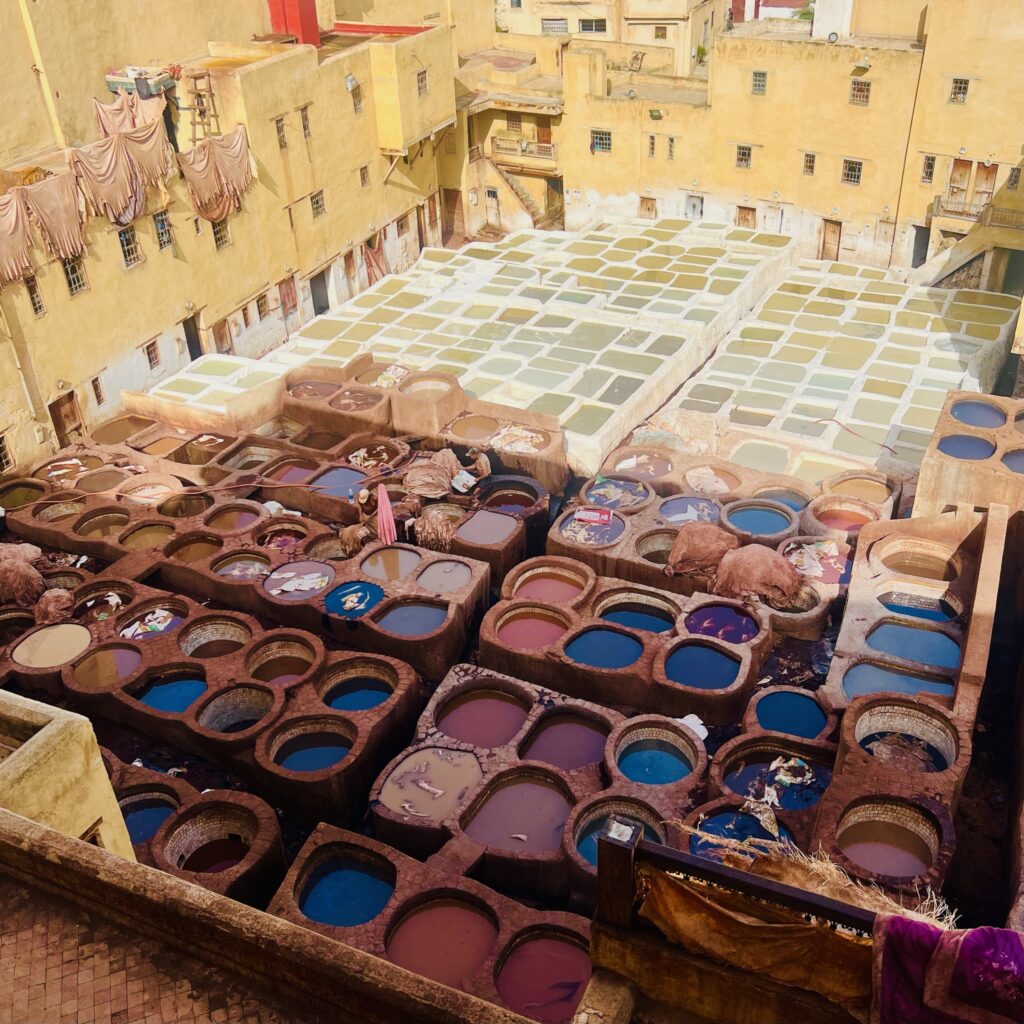
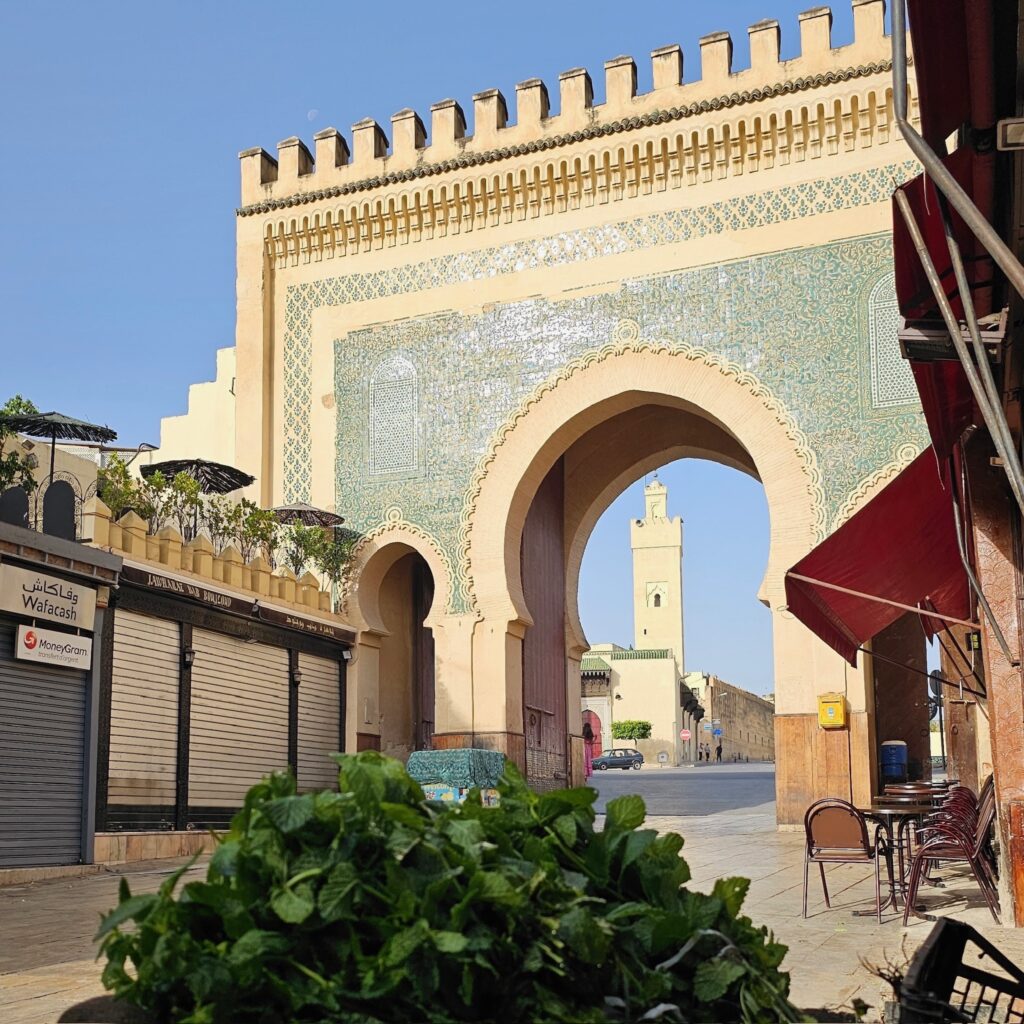
Day 8
Catch the CTM bus to Chefchaouen early this morning, ideally around 9:00 AM. The journey takes approximately 4 hours, so you’ll arrive just in time for lunch.
For our full 1-day in Fes Itinerary, more things to do and our accommodation recommendations for staying in the medina head here:
Chefchaouen Day 8-9 (1 night)
Chefchaouen, affectionately known as just Chaouen to the locals, is a sleepy mountain town turned tourist hotspot (due to the enchantment of the whole town being painted blue!).
There is no definitive reason for the blue walls, buildings and streets but theories include it being to replicate the sky to be closer to heaven, or to repel mosquitos. Chefchaouen is a welcome change of pace from other Moroccan cities. You can instantly feel the calming, less hectic way of life.
We made the most of this and majorly slowed down during our time in Chefchaouen. Hostels and hotels here are well priced for anyone travelling on a budget, so find yourself somewhere within the medina walls.
Day 8
After arriving at 1:00 PM and dropping off your luggage, it’s time to start exploring the incredible blue city of Chefchaouen. Start off by wandering around the streets and letting yourself get a bit lost, the city is small so it’s very easy to find your way back, and every single street is a photo op. In the evening take the short hike up to the Bouzafer Mosque for stunning views of the setting sun over the magical blue city.
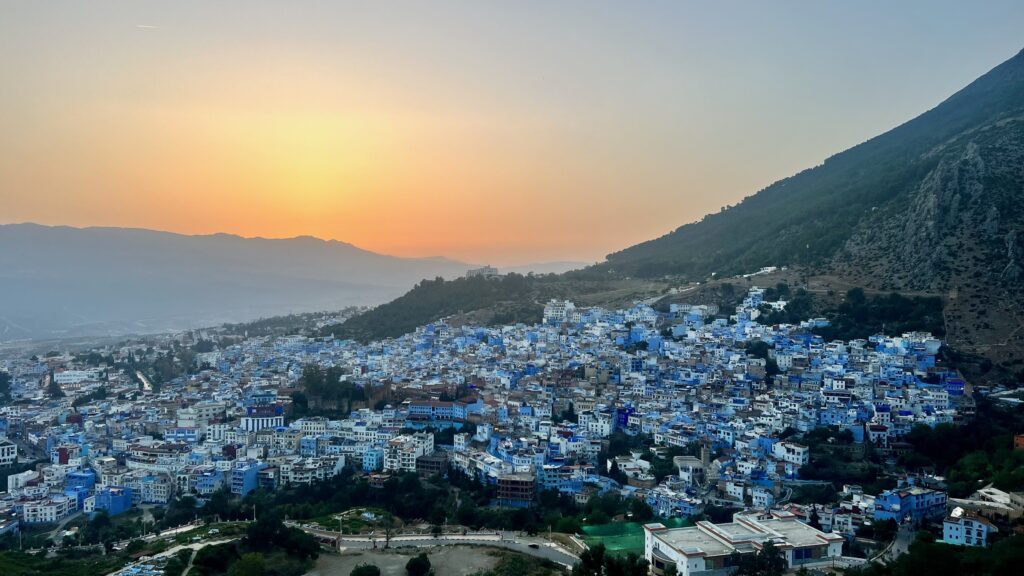
Day 9
Early start today. Chefchaouen is on a lot of day tour routes from Fes and these start to arrive in the morning around 09:00/10:00 AM. So it’s best to get out before to fully take in and experience the beautiful blue streets and explore some key photo spots, without too many people around.
Start by heading to Place El Haouta for a coffee to start your morning, then stroll along Jamaa street before looping down to the Kasbah.
For lunch give Bilmos a go for a delicious Moroccan meal or Cafe Clock (same owners as the Marrakesh one, and they actually also have one in Fes) for a more modern take on traditional Moroccan cuisine. The one here in Chefchaouen has a fantastic rooftop.
After enjoying the calming atmosphere the city has to offer, head to the CTM bus station (about a 15 minute walk from the souk or a few mins by taxi) to catch the bus to Tangier at 3:00PM. The bus journey to Tangier takes around 3 hours.
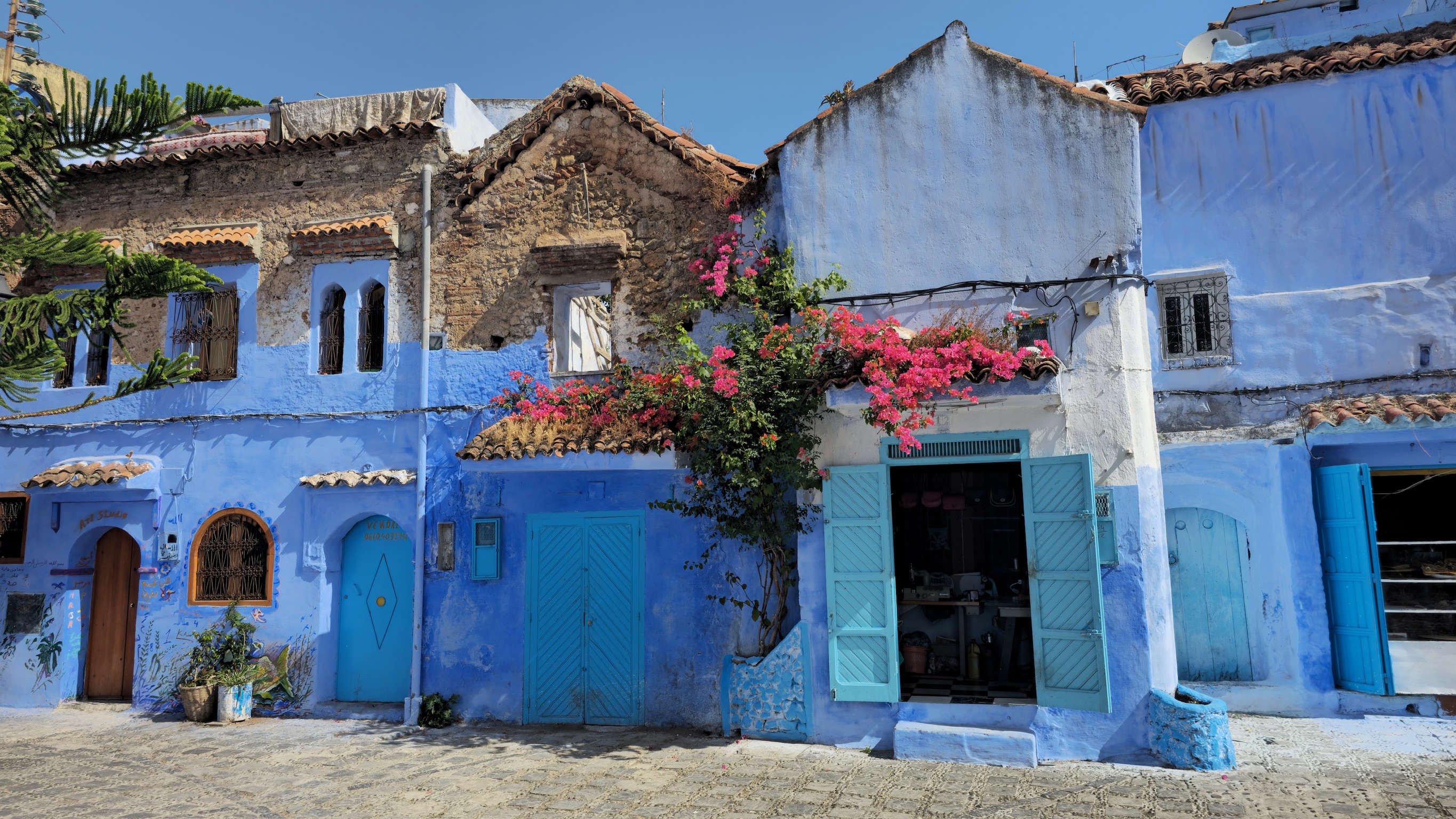
Tangier Day 9-10 (1 night)
Tangier is located on the northern coast of Morocco and is a popular destination for people holidaying on the southern Spanish coast or Gibraltar as the ferry across the sea only takes an hour. In Tangier, you can really feel the Andalusian influence in comparison to the more southern areas of Morocco. Civilisations first settled in Tangier in the 5th century BC and it has been a popular trading city and link to Europe through the years. In the 1940s and ‘50s, when the city was designated as an International Zone, a vibrant community of writers and musicians settled and worked in Tangier, and has left a lasting artistic influence on the city.
We found that Tangier felt different to the other Moroccan cities we visited, the shopkeepers and street sellers hassle you so much less, and the medina felt much cleaner and less intense than anywhere else in Morocco. Tangier has an international airport that a large number of European airlines fly to so it is easy to fly out of here, or you can choose to get the ferry over to Spain (as we did) and continue your travels into Europe.
Day 9
The CTM bus will arrive into the Tangier at around 6:00 PM. You may have to haggle for a taxi before heading into the city. We highly recommend Chez Hassan for dinner, the seafood Tagine was, and still, is the freshest and tastiest seafood dish Alec has ever had!
After dinner, take a walk down to the promenade to wander along the coast and watch the sunset (and catch a glimpse of Spain across the Gibraltar Strait on a clear day!)
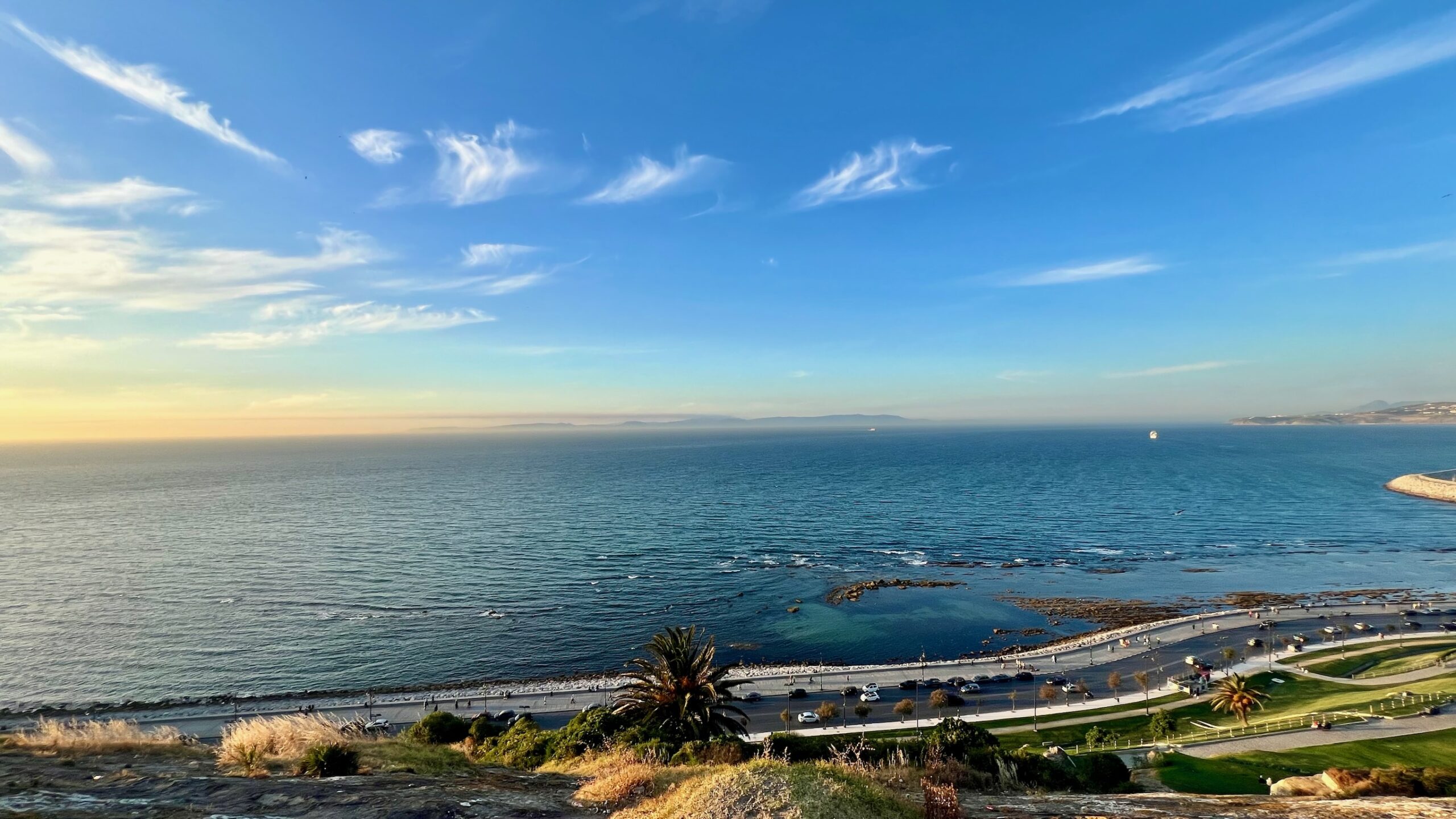
Day 10
For your final day in Morocco, start by finding your bearings at the Grand Socco (a large plaza/roundabout with a beautiful mosque and traditional art deco style cinema) before heading through the souk to the Petit Socco, exploring the many stalls along the way.
For lunch, Abou Tayssir is a lovely, small Syrian restaurant on the outskirts of the souk that we would recommend for a delicious and budget friendly mezze style meal!
After lunch, wander up to Bab El Bahr Square. Here you will be met with the ancient city walls. Within this square is the Kasbah Museum, which is worth a look around just for the beautiful garden and riad style architecture alone!
Final Thoughts
Morocco is one of the most incredible countries we have been lucky enough to visit. It is amazing to us how somewhere so close to Europe can feel so many worlds away. Moroccan culture is something incredibly special and a complete feast for the senses. We hope this 10-day itinerary inspires you on your own journey in this wonderful country, and that you enjoy our itinerary as much as we have loved putting it together. We wish you an amazing time exploring what this country has to offer!
